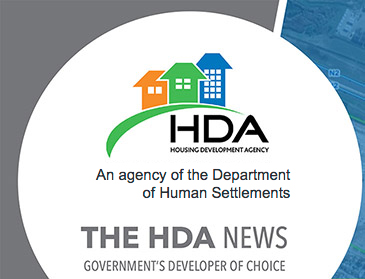
|
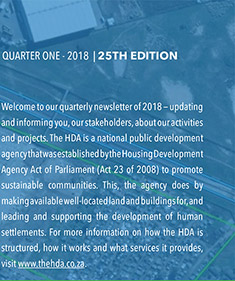
|
 |
 |
The past month has been an eventful one for the country. What we can celebrate is the fact that our constitutional democracy is maturing and has a seamless process that will stand the test of time. For the human settlements sector, the important news is the change of the Minister. On that note, I congratulate Honourable Nomaindia Mfeketo on her appointment as the new Minister of Human Settlements. We are looking forward to her term of office and the support I am sure the sector will bring to her. She has extensive experience as a Member of Parliament and has played various roles in housing, including Development Action Group (DAG) - an organisation focusing on housing options and housing development. Among her many achievements, she was also the first black woman to become Mayor of the City of Cape Town. I also congratulate Honourable Lindiwe Sisulu on her new role as Minister of International Relations and Cooperation. The work of government has not stopped and we continue to chase our targets as per the Annual Performance Plan (APP) for 2017-18 as we wrap up the fourth quarter of the financial year. At the same time, we are finalising our APP for the 2018-2019 financial year - please look out for these on our website (www.thehda.co.za) soon. We have also published there our new strategy and plan on stakeholder and intergovernmental relations - I encourage you to farmilarise yourself with these. There are great expectations on the HDA by our Executive Authority. The implementation of the Catalytic Projects programme remains at the centre of our APP. Related to this is the work we have begun on the Priority Housing Development Areas (PHDAs). We have, over the years, delivered sterling work in various projects where we had the responsibility of being an implementing agent or project manager. Soon, we will be planning and rolling out a vibrant publicity campaign around the catalytic projects. We are looking forward to a busy and productive tenure! 
|
The Strategic Intergovernmental Relations Policy & Strategy (SIR)Towards the end of 2017, the HDA transformed its Intergovernmental
Relations (IGR) unit into the Strategic Intergovernmental Relations
(SIR) unit with a revitalised mission to serve as the custodian of the
Agency's strategic stakeholder outreach and engagement efforts. The SIR Policy and Strategy is an engagement plan for building awareness about the mandate and activities of the HDA among its stakeholders. "We will engage with our stakeholders to advance the HDA's mandate and, in advancing that mandate, create opportunities for greater collaboration," says Sibongile Mpofu (SIR Manager). Upon finalisation of the internal processes surrounding the Policy and Strategy, a programme will be sent out that will indicate which stakeholders the HDA will be engaging in a particular month. The first phase of the Strategy is expected to be implemented from the start of April as part of the HDA's annual programme of action. "We are currently institutionalising the Strategy and Policy within the organisation until the end of March 2018." |
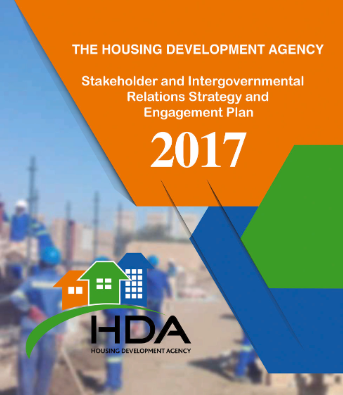
"From April up till the end of the year, we will have roundtables on issues still to be consolidated," continues Sibongile. Roundtables and related events will be announced duly as and when they are confirmed and updates will be provided on the progress of the plan. A downloadable copy of Strategic Intergovernmental Relations (SIR) Strategy and Engagement Plan is available at www.thehda.co.za (or directly follow the link: http://thehda.co.za/multimedia/research) |
World Urban Forum 9: Highlights |
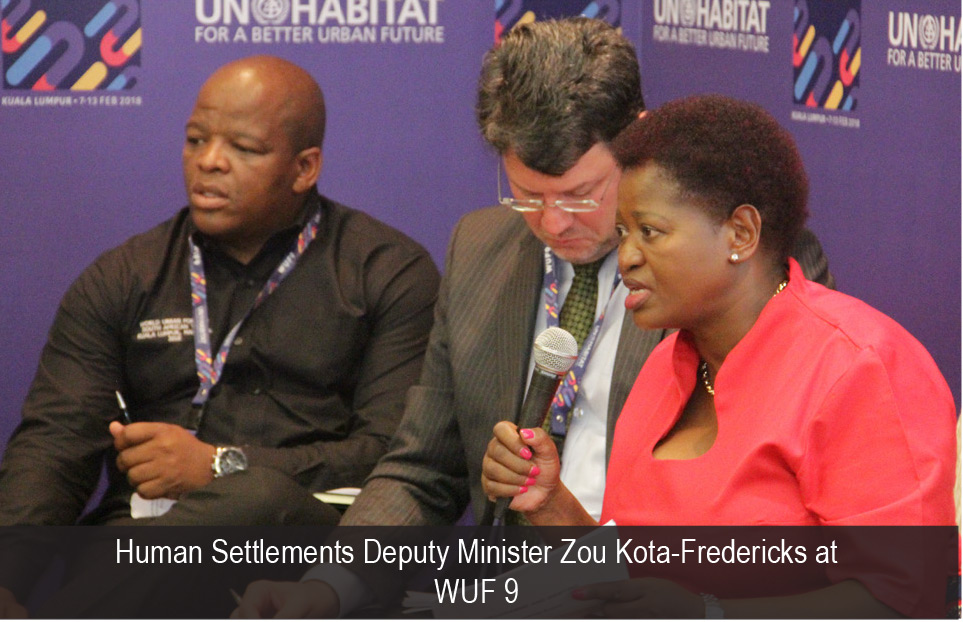 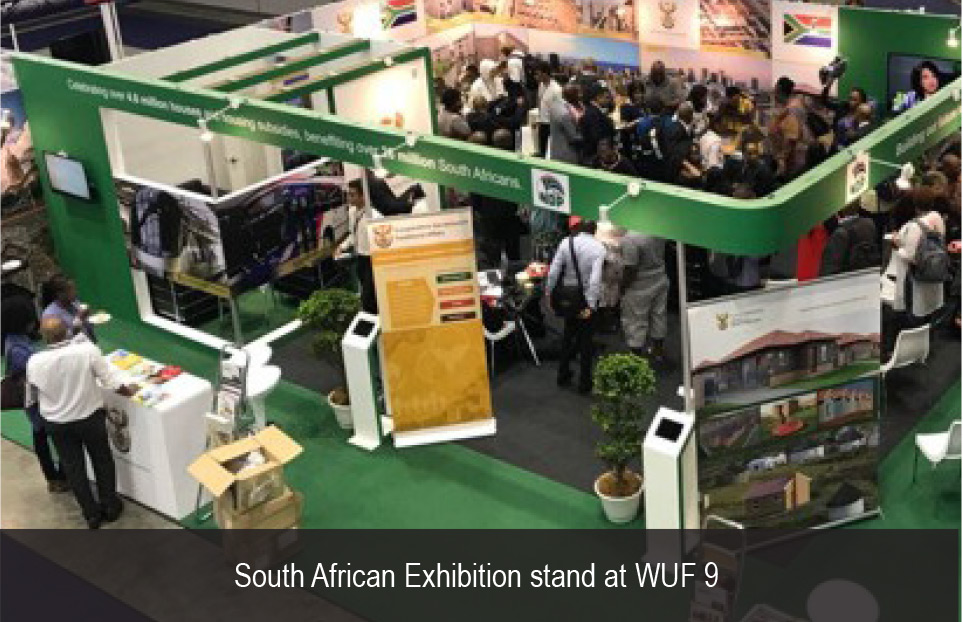
|
The 9th World Urban Forum was held in February in Kuala Lumpur, Malaysia, under the theme - Cities 2030, Cities for All: Implementing the New Urban Agenda. With our contribution, the Department of Human Settlements' delegation visited Malaysia to showcase human settlements' work at the forum, which was established by the United Nations to ensure that member states and the world respond to ensure proper and sustainable management of urbanisation in towns and cities across the globe. Our great work is trending internationally. The South African contingent to the summit celebrated the journey of delivering 4.6 million houses and subsidies and benefitting 30 million people since 1994 through an exhibition stand at the event. Speaking on the third day of the Summit, Deputy Minister Zou Kota-Fredericks highlighted the priority placed by South Africa on upgrading informal settlements. "In our endeavours, we are undertaking the identification and verification of informal settlements in the country, [which] will assist us in having real-time data; monitoring the growth patterns; understanding and planning for the extent of the challenge we are faced with," said the Deputy Minister. "We have established Provincial Forums on Upgrading of Informal Settlements in all nine provinces of the country. The forums facilitate alignment of upgrading processes with all municipalities and monitor progress in implementation, as well as knowledge exchange with various stakeholders in each province," added the Minister. |
Palm Ridge Extension 9: The HDA's Largest BNG Project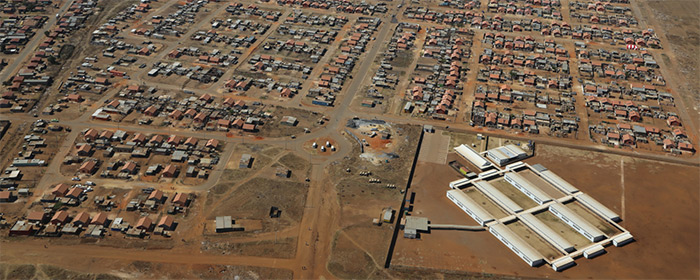
|
|
|
The HDA's nationwide human settlements development portfolio has seen it functioning in wide-ranging roles including those of project manager, beneficiary administrator, developer and site services facilitator as it works to fulfill its vital mandate as a leader in the human settlements sector. In Gauteng, the Agency is currently involved in 15 Catalytic Projects and 12 Breaking New Ground (BNG) Projects. The HDA also provides Site and Service development services to the City of Ekurhuleni. One of the most significant projects in terms of size and social impact in the HDA's project management portfolio is the Palm Ridge Extension 9 project in the south of Alberton, in Gauteng's East Rand. This project, launched in 2016, forms part of the Informal Settlements Upgrading Programme and will yield a total of 1600 units upon completion. "We completed 147 units in the 2016/17 financial year and are now working on a target of 1060 units intended for completion in the 2017/18 financial year," says Tsokolo Monareng, Development Manager for Gauteng projects at the HDA. "When we started the project in 2016, residents were living in an informal settlement setup and we had to facilitate their relocation to temporary relocation areas while servicing the site with roads and other necessary infrastructure," he says. |
At Palm Ridge, the Agency is both Project Manager and Beneficiary Administrator, the latter of which involves the verification and tracking of beneficiaries, of whom priority is given to the elderly, child-headed households and people with disabilities. Upon completion, the HDA will also be responsible for the issuing of title deeds to homeowners. While executing all of these tasks, the HDA is also playing a crucial empowerment role in the community, creating jobs in various built environment disciplines and providing on-the-job training. Training provided is in beneficiary administration, project administration, material management and security. On an enterprise development level, local sub-contractors are also being groomed to become competent contractors who will be capable of managing larger portions of contracts in the future. Recent progress reports indicate that 879 units have already been completed at Palm Ridge, with 840 having already been inspected, approved and issued with certificates of completion. The inspection process is rigorous, comprising a four-level quality inspection process that involves the HDA's own inspectors, provincial inspectors, inspectors from the City of Ekurhuleni and quality assurance inspectors from the National Home Builder's Registration Council. We are expected to hand over all units by March 2018. |
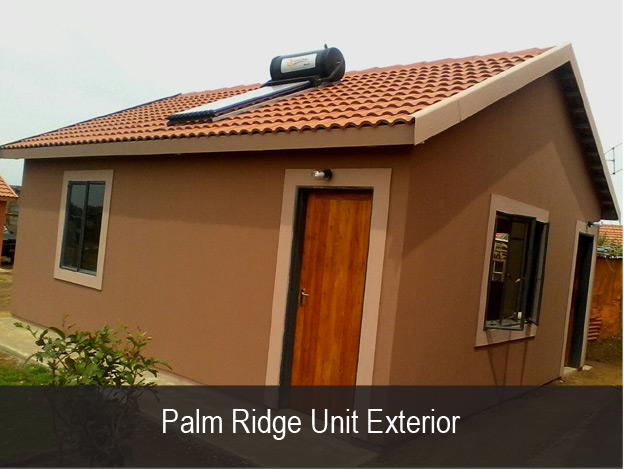
|
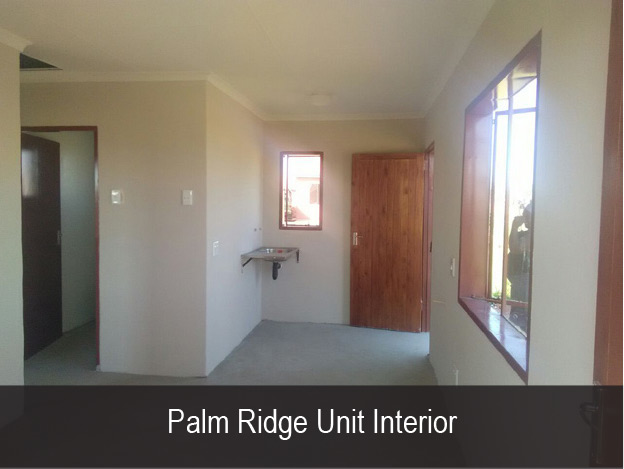
|
Map of the Quarter |
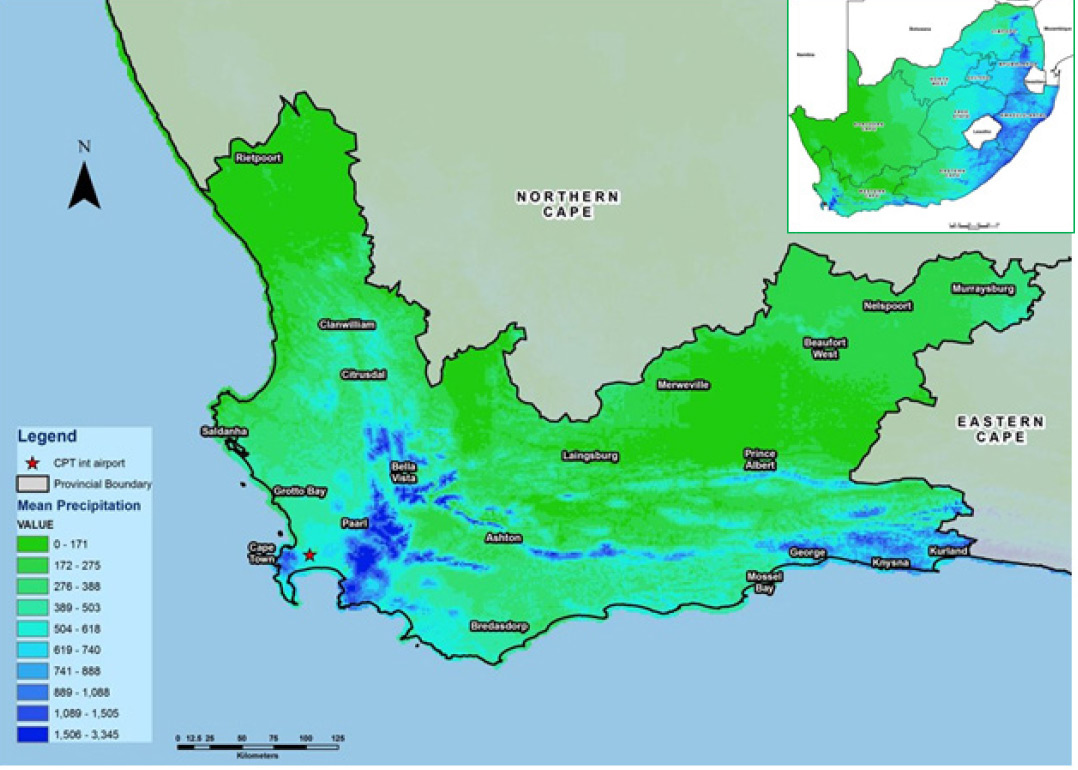 Fig. 1. Mean Precipitation in Western Cape |
South Africa is a semi-arid and water-scarce country. Its rainfall is distributed unevenly due to landscape variability, occurring in seasonal cycles. This drives us constantly between floods and droughts. As such, our water sources primarily depend on rainwater for a continuous and sustainable supply to both our streams, rivers, dams and taps. For the purpose of this article, the main focus is the Cape Town International Airport in the Western Cape Province. Cape Town has the second highest population in South Africa after Johannesburg. It has a warm Mediterranean climate which is characterised by mild, moderately wet winters and dry, warm summers. The main sources of water to taps in the city include the Wemmershoek, Upper- and Lower Steenbras, Theewaterskloof, Voëlvlei and Berg River dams. Currently, this city is experiencing a drought. |
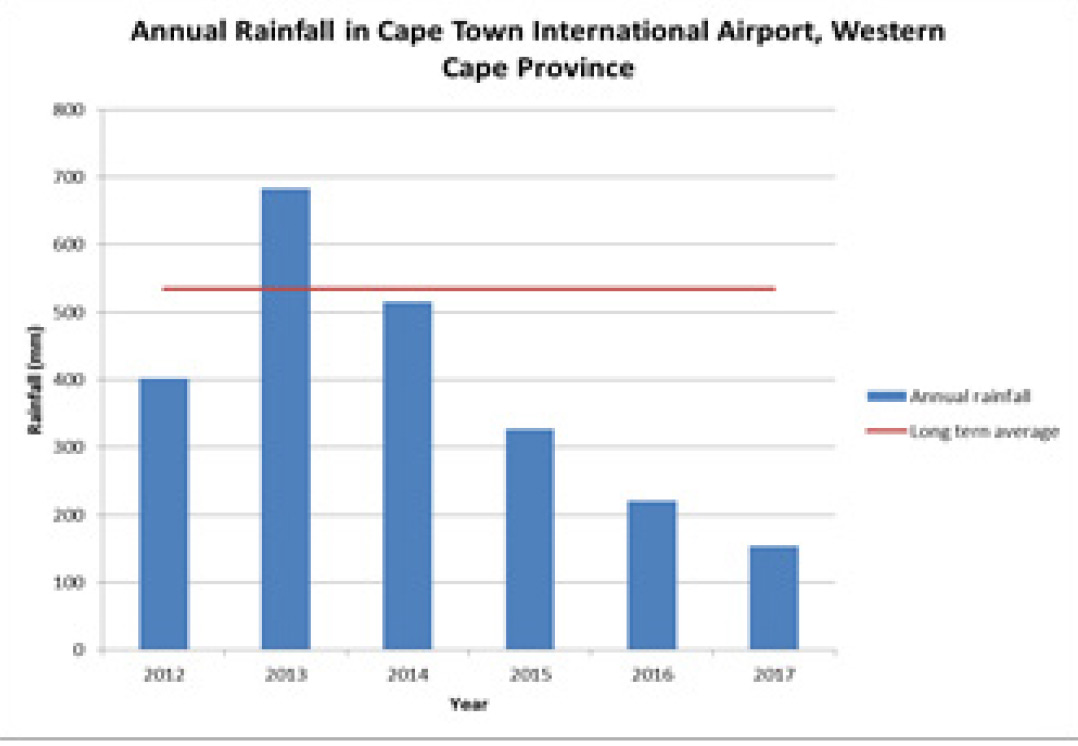 |
WHY DROUGHT IN CAPE TOWN? The map above clearly shows variation in precipitation in South Africa. The main map shows precipitation in the Western Cape Province. Parts of Cape Town experience rainfall as high as 1 500mm per annum. According to the South African Atlas of Climatology and Agrohydrology, Cape Town International Airport has an average rainfall of 535mm per annum. The graph on the left indicates a decline in annual rainfall from 2013 to 2017. Looking at the relationship between annual rainfall and the average rainfall, it is clear that rainfall has declined with more than half of the average rainfall over the last two years (CSAG). This decline in rainfall, together with population growth in relation to investment in water storage infrastructure, are part of the reason why the Cape Town is experiencing its current drought. |

|
VIEW OUR PROVINCIAL NEWSLETTERS ON OUR WEBSITE:
|
 |
 @TheHDA
@TheHDA @the_hda
@the_hda @the_hda
@the_hda The Housing Development Agency (HDA)
The Housing Development Agency (HDA)